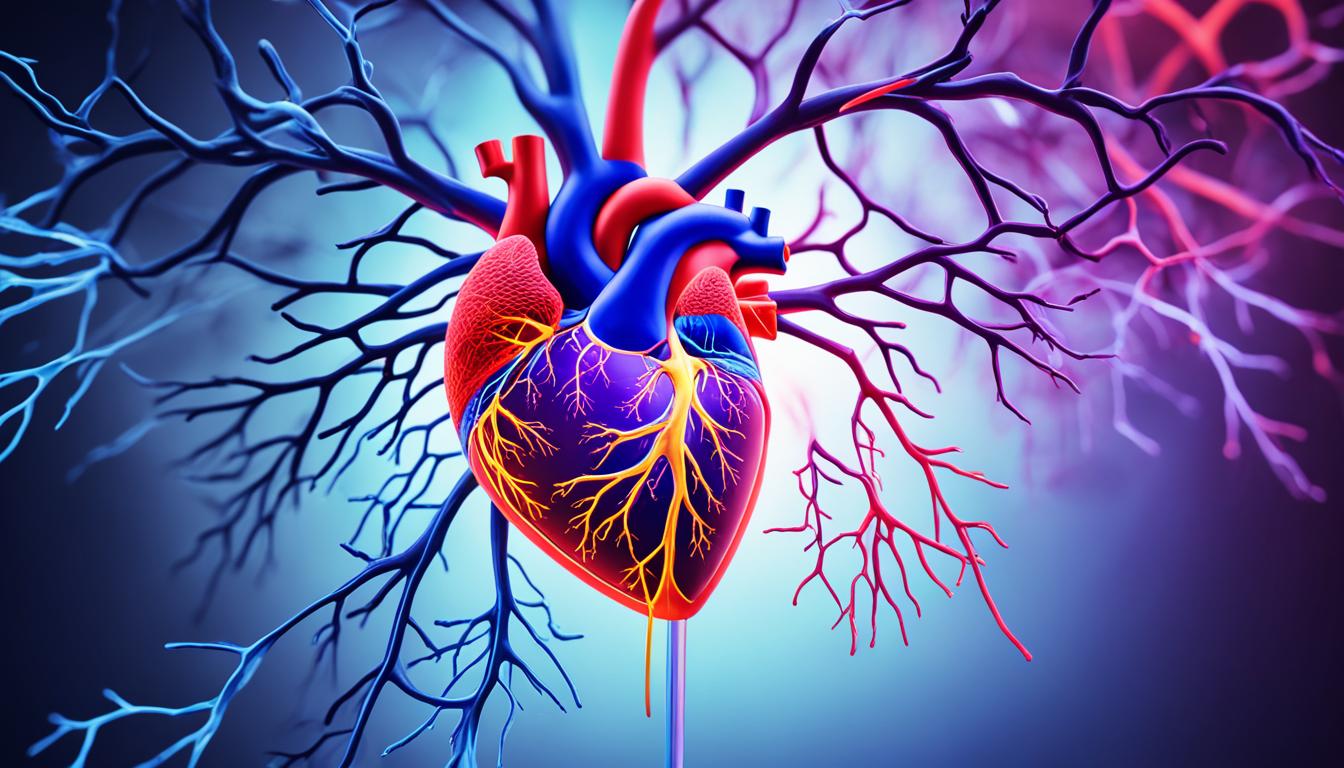Bundle branch block is a heart condition that affects electrical signals. These signals manage how the heart beats. When part of the heart’s electrical system doesn’t work right, it’s called a bundle branch block. This can make you feel dizzy, have heart flutters, or chest pain.
The condition is often caused by heart problems like clogged arteries or issues with the heart’s structure. These problems can mess up the heart’s electrical signals, causing a block.
Doctors find bundle branch block by using an electrocardiogram (ECG). This test shows the heart’s electrical activity. If the ECG looks strange, it means there might be a block.
How it’s treated changes from person to person. Sometimes, an implant called a pacemaker can help keep the heart’s rhythm steady. Or, doctors might try using stem cells to fix the damaged part of the heart.
It’s important to see your doctor regularly. They can make sure your heart stays healthy with the right care. Even though bundle branch block can be serious, many people live full, active lives with the right treatment.
Key Takeaways:
- Bundle branch block is a condition that affects the heart’s conduction system.
- It can cause symptoms such as fainting, palpitations, and chest pain.
- The blockage can occur in the right or left bundle branch, with different causes for each.
- Common causes of bundle branch block include coronary artery disease and cardiomyopathy.
- Diagnosis is done through an electrocardiogram (ECG).
Symptoms and Diagnosis of Bundle Branch Block
Bundle branch block is challenging to spot because it often shows no clear symptoms at first. But sometimes, people feel like they might faint or actually faint. These are called syncope or presyncope. These signs show up more if there are other heart problems too.
To figure out if someone has bundle branch block, doctors use an electrocardiogram (ECG). This test records the heart’s electrical signals. It shows if there are any issues in the heart’s electrical system.
The ECG helps doctors see if the problem is in the right or left bundle branch. This detail is important for the right treatment.
Electrocardiogram (ECG) in Diagnosing Bundle Branch Block
An ECG is key for finding bundle branch block. It’s a simple test. Electrodes on the chest pick up the heart’s electrical activity.
Depending on which bundle branch is affected, the ECG can look different. For example, a right bundle branch block makes the QRS complex wider. But, a left block changes the ST-T waves.
By studying these ECG patterns, doctors can confirm bundle branch block. Then, they can plan how to treat it.
Treatment Options for Bundle Branch Block
Bundle branch block often doesn’t need treatment. But when it causes issues or there are other heart problems, treatment may be necessary.
In cases of complete block or with certain heart conditions, a pacemaker might be put in. This device ensures the heart beats correctly by sending the right electrical signals.
For some with both bundle branch block and dilated cardiomyopathy, a CRT treatment could help. This method uses a special pacemaker in the heart’s ventricles. It makes the heart’s muscles work together better. As a result, this treatment can boost the heart’s effectiveness and cut down on symptoms.
It is crucial to have regular check-ups with a doctor. This helps keep track of the condition and adjust treatments as needed. With these check-ups, people with bundle branch block can ensure they get the right support for their heart.
FAQ
Q: What is bundle branch block?
A: Bundle branch block is a heart condition affecting its conduction system. It happens when the bundle branches face a blockage. These branches send electrical signals to the ventricles.
Q: What are the symptoms of bundle branch block?
A: Signs of bundle branch block include fainting, chest pain, and an irregular heartbeat. Sometimes, it doesn’t show any symptoms for years.
Q: How is bundle branch block diagnosed?
A: Doctors use an electrocardiogram (ECG) to diagnose bundle branch block. This test looks for changes in the heart’s electrical activity. It also tells if the right or left bundle branch is blocked.
Q: What are the causes of bundle branch block?
A: The causes differ if the right or left bundle branch is blocked. They can include heart diseases like coronary artery disease. Other causes are cardiomyopathy and valve problems.
Q: What are the treatment options for bundle branch block?
A: Treatments depend on the cause and symptoms. A pacemaker can sometimes help. So can stem cell therapy or cardiac resynchronization treatment (CRT). Regular visits to the doctor for check-ups are crucial.
Q: Is bundle branch block a serious condition?
A: By itself, bundle branch block isn’t always serious. But if it causes issues or if other heart problems are present, it needs attention. Always talk to a doctor to decide the right steps for you.

